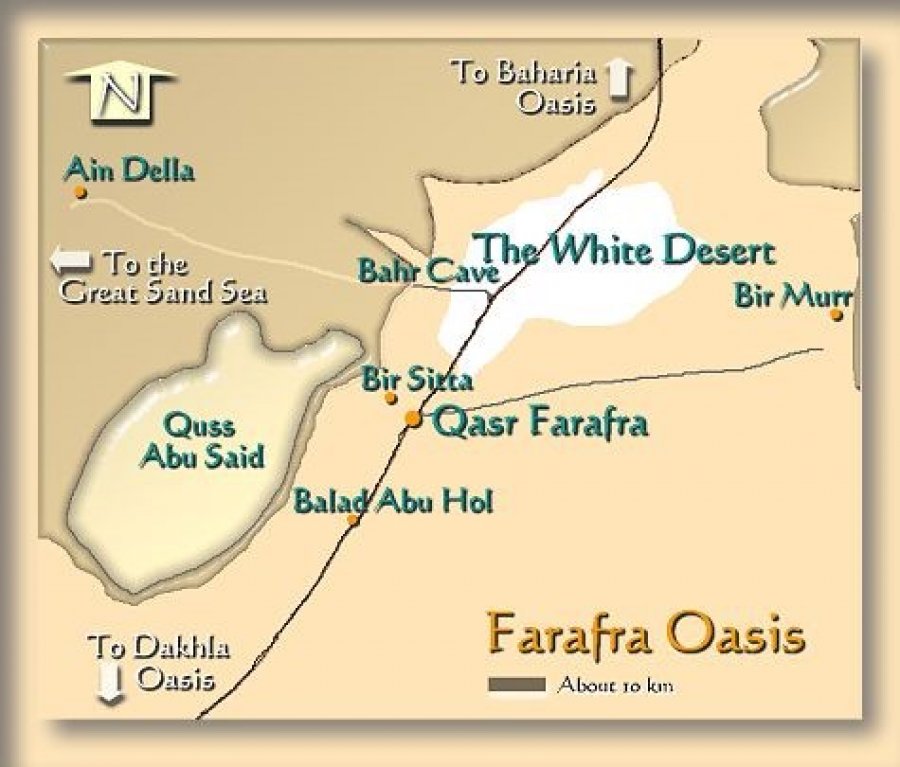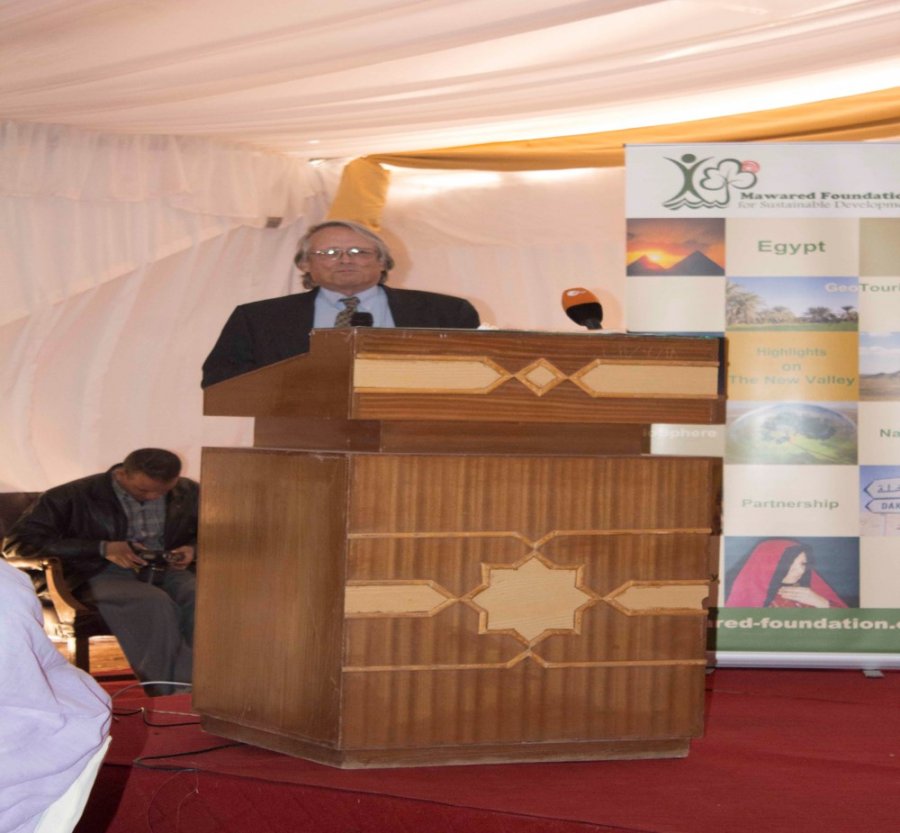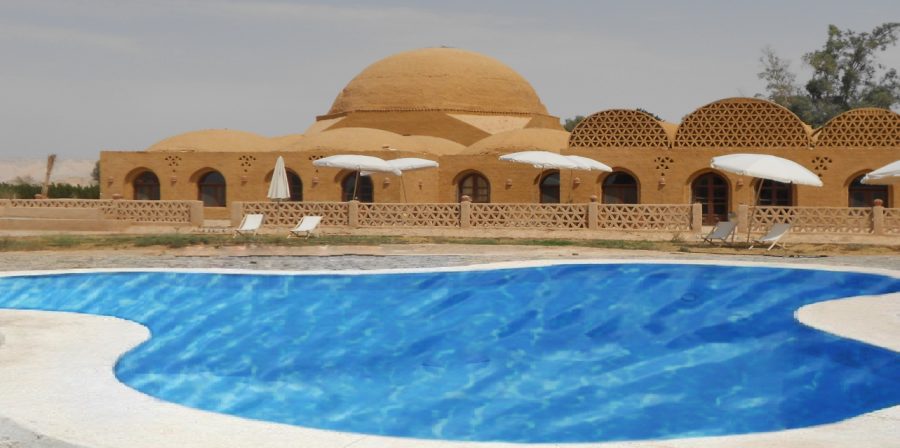-
Shanda LodgeAbout UsHotel RatesLocationHow To Reach There
- Facilities
ReceptionLoungesRestaurantsSpa WellnessPoolRooms- Attractions
NatureHistoryArchaeologyArchitectureFlora Fauna- Activities
Culture ToursCamel Rides TrekkingDesert SafariYoga MeditationSand BoardingStargazingBedouin NightHot SpringWellness RecoveryBird Watching- Sightseeing
Location

Location Details
The Farafra Oasis is the smallest oasis located in Western Egypt, near latitude 27.06° North and longitude 27.97° East. It is located in the Western Desert of Egypt, approximately mid-way between Dakhla and Bahariya.
Farafra has an estimated 5,000 inhabitants (2002) living within its single village and is mostly inhabited by the local Bedouins. Parts of the village have complete quarters of traditional architecture, simple, smooth, unadorned, all in mud colour. Local pride has also secured endeavours to secure local culture. Also located near Farafra are the hot springs at Bir Setta and the El-Mufid lake.
A main geographic attraction of Farafra is its White Desert (known as Sahara el Beyda, with the word sahara meaning a desert). The White Desert of Egypt is located 45 km (30 miles) north of Farafra. The desert has a white, cream color and has massive chalk rock formations that have been created as a result of occasional sandstorm in the area. The Farafra desert is a typical place visited by some schools in Egypt, as a location for camping trips. The Desert was also the featured location in the music video for "Echoes" by the Klaxons.
Farafra Oasis
The oasis of Farafra is a triangular-shaped fertile depression to the north-west of Dakhla and roughly mid-way between Dakhla and Bahariya, with the impenetrable Great Sand Sea bordering the region to the west. Since 1958 Farafra has been part of the Wadi el-Gedid or ‘New Valley’, but in ancient times it was known as Ta-iht or the ‘Land of the Cow’. This name probably came from the region’s association with the cow-headed goddess Hathor, known for her nurturing qualities. The largest depression in the Libyan Desert, measuring around 200km long and 90km wide (at Qasr el-Farafra), this oasis currently has the lowest number of inhabitants in the New Valley, but ambitious plans by the Egyptian government for dozens of new communities in Farafra will signify the end of this remote and peaceful oasis.
Historical Background:
Farafra’s ancient history is clouded in mystery. Ta-iht is mentioned in texts from the Pharaonic era – in the titulary of a Dynasty V official and in the story of ‘The Eloquent Peasant’, which relates to the reign of King Khety of Dynasty X. A list of localities in Luxor Temple names the oasis as a source of dates and minerals during the reign of Rameses II, while an inscription by his son Merenptah at Karnak Temple, tells of the occupation of Farafra by Libyan troops during his Dynasty XIX reign. At Edfu Temple Farafra is mentioned as the third of the Seven Oases, ‘. . . Ta-iht at the north-west of Kenemet’ (Dakhla).
Even though it is mentioned in literary sources, Farafra is not noted for its ancient monuments and
no archaeological evidence of Pharaonic occupation has yet been found. But like many remote places there are stories and legends associated with Farafra. One of these legends connects the oasis with the mysterious disappearance of the army of Cambyses, the Persian king who conquered Egypt in the 6th century BC. In a story told by Herodotus, Cambyses
sent an army of 50,000 men from Thebes to Siwa to destroy the Oracle of Amun. It was reported that the army travelled seven days to the city of ‘Oasis’ (Kharga?), then probably via Dakhla to Farafra before striking off across the desert towards Siwa, perhaps attempting to cross the treacherous Great Sand Sea. The army never reached Siwa and was never heard of again. Herodotus was told that Cambyses’ army met their fate when a great sandstorm rose up and engulfed the marching men, causing them to entirely disappear – the search for the lost army has inspired the journeys of desert explorers ever since.
The few sites of archaeological interest in Farafra all date from the Roman Period onwards, when a fortress was built to guard this section of the ancient caravan routes to the other oases and to the Nile Valley.
Most visitors to Farafra Oasis go there to see the White Desert, the area to the north-east of Qasr el-Farafra which is renowned for its spectacular scenery. The chalk-white landscape is strewn with alien shapes, boulders of brilliant white which thrust up from the surface of the desert, intensified by the clear light of noon, shimmering gold at sunset or blackened and shrunken in a cloud-filled sky. Many of the formations are given descriptive names – sculpted by the harsh desert winds into weird shapes which constantly change over time..
As part of a White Desert safari the visitor may see an important spring known as Ain Hadra, where palm trees rise up from a mound in the desert on the ancient caravan route to Bahariya. The ground is covered with pottery sherds left by travellers in Roman and Byzantine times and amongst the remains of buildings here, Ahmed Fakhry found Roman amulets of Sekhmet and Harpocrates, a scarab and a Roman coin. Ain Hadra is situated at the southern end of a small picturesque depression, the Ain el-Wadi. Although long deserted the tiny oasis was inhabited during the Roman Period as attested by the many pottery sherds.
Around 70km north of Qasr Farafra is an area known as the Hidden Valley, or Wadi el-Obeiyd, where a small dried up lake has yielded evidence of a prehistoric presence. An Italian/Egyptian mission, who have been investigating the area for over a decade, has identified a Neolithic seasonal village form the 8th millennium BC, which may have links with Nabta Playa. These may have been the Libyan Desert’s earliest inhabitants who were a pastoral people at a time when the region had regular rainy seasons. This important investigation could change our whole concept of the history of Egypt’s desert regions.
Lastest News
-
Egypt holds its first ever Niche Tourism Forum
Shanda Lodge
-
-
IV - Dakhla Sightseeing
Shanda Lodge
-
Pool
Shanda Lodge
-
Back To Nature
Shanda Lodge
Email to friend
You need to Login to add item in your wish list
- Facilities
 Clear
Clear






